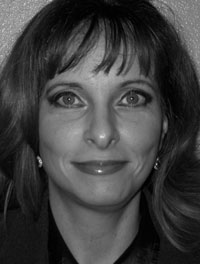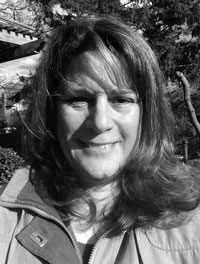EHS Committee Update
The RadTech Environmental Health and Safety (EHS) Committee, led by chairman Michael Gould of RAHN, met in San Francisco, California, on March 2. Rita Loof gave an update of activities in the South Coast Air Quality Management District (SCAQMD). She is helping to represent RadTech member interests in several areas with SCAQMD and has just been approved for a two-year term as representative of RadTech on the Best Available Control Technology Scientific Review Committee (BACT SRC).
The committee again discussed bisphenol A, which has appeared in the news numerous times recently. Of particular note is that the European Chemicals Agency (ECHA) Member State Committee has unanimously agreed on identification of bisphenol A and three other substances of very high concern (SVHCs). Substances were added to the SVHC list in January 2017. Progress on implementation of the Lautenberg Chemical Safety Act – the “new Toxic Substances Control Act (TSCA)” – and feedback from a meeting of the American Chemistry Council were reviewed. Also, a bullet point primer on the pending “TSCA Reset,” scheduled to begin June 22, 2017, was shared.
Guide to Proper Handling of UV-Curable 3D Printing Resins
UV-curable resins for 3D printing/additive manufacturing cure rapidly when exposed to UV sources. As with all chemicals, UV-curable resins must be handled in a safe manner. A fact sheet now available is meant as a guideline for the handling of UV-curable resin materials (photopolymers) used in 3D printing systems, such as stereolithography (SLA), digital light processing (DLP) and UV inkjet. The guide can be downloaded from RadTech’s website at http://www.radtech.org/health-safety/proper-handling-of-uv-resins.
Hazardous Waste Generator Improvements Rule Update 2017
In late 2016, the US Environmental Protection Agency (US EPA) administrator signed the final Hazardous Waste Generator Improvements Rule. This rule finalizes an update to the hazardous waste generator regulations and is meant to make the rules easier to understand, facilitate better compliance, provide greater flexibility in how hazardous waste is managed and close important gaps in the regulations.
Two key provisions with which US EPA is finalizing flexibility are as follows:
- allowing a hazardous waste generator to avoid increased burden of a higher generator status when generating episodic waste, provided the episodic waste is properly managed; and
- allowing a very small quantity generator (VSQG) to send its hazardous waste to a large quantity generator under control of the same person.
In addition to finalizing key flexibilities, the rule enhances the safety of facilities, employees and the public by improving hazardous waste risk communication and ensuring that emergency management requirements meet today’s needs. Further, US EPA is finalizing a number of clarifications without increasing burden, including a reorganization of the hazardous waste generator regulations so that all such regulations are in one place. More information can be found at https://www.federalregister.gov/documents/2016/11/28/2016-27429/hazardous-waste-generator-improvements-rule.
Evaluating Risk of Existing Chemicals Under TSCA
Under the Toxic Substances Control Act (TSCA), the US Environmental Protection Agency (US EPA) now is required to evaluate existing chemicals to determine whether they “present an unreasonable risk of injury to health or the environment.” Under the conditions of use for each chemical, US EPA will assess the hazard(s), exposure(s) and the potentially exposed or susceptible subpopulations(s). This information will be used to make a final determination as to whether the chemical presents an unreasonable risk. Learn more at https://www.epa.gov/assessing-and-managing-chemicals-under-tsca/evaluating-risk-existing-chemicals-under-tsca.
Doreen M. Monteleone, Ph.D.
Director of Sustainability & EHS Initiatives
RadTech International North America
doreen@radtech.org
News From The West Coast
Advocacy for Exemption Continues
RadTech has stepped up advocacy efforts to obtain a permit exemption for UV/EB/LED materials from the South Coast Air Quality Management District (SCAQMD). The SCAQMD board directed its staff to work with industry to minimize regulatory barriers to the implementation of UV/EB technology. Although this is a regional rule, the policy decisions of SCAQMD tend to influence national policy.
When the agencys governing board met April 7, 2017, RadTech took the opportunity to discuss its proposal for a permit exemption for UV/EB/LED materials. Two days before the meeting, district staff released new language for Rule 219 – Permit Exemptions. RadTech expressed its appreciation for the change in the exemption level from 25 grams per liter to 50 grams per liter of volatile organic compounds (VOC’s), as requested, but expressed concerns with the newly added record-keeping requirements. The new record-keeping requirements will render the exemption useless.
The new language specifically targets printing and coating operations by requiring yet another annual report every March for materials that contain less than 50 grams per liter. These are the cleanest facilities, which have reduced their emissions beyond rule requirements.
Staff does not believe it will be burdensome for businesses to submit an annual report to the district, but RadTech respectfully disagreed, explaining that wood coaters and print shop operators want to be able to focus on their businesses rather than on filling out forms. The whole point of providing a permitting exemption is to make it easier for them to continue to operate in Southern California.
The issue was scheduled to be heard in committee April 21, 2017, and the final adoption hearing was set for early May in Diamond Bar, California. RadTech will continue to urge the SCAQMD board to support its exemption request for UV/EB/LED materials that contain less than 50 grams per liter of VOCs.
BACT Update
Several weeks ago, the SCAQMD board adopted RadTechs proposed resolution language that directs staff to continue work on updating the Best Available Control Technology Guidelines, with an emphasis on UV/EB inks and coatings technology, and report back to the agencys Stationary Source Committee by June 2017 on proposed updates. As part of the commitment, agency staff convened a meeting of the BACT Scientific Review Committee. RadTech was officially appointed as an adviser on the committee in March.
BACT is required for new and relocated sources and for modifications that increase emissions. In response to requests by RadTech, SCAQMD is now proposing inclusion of UV/EB technology as a compliance option for the categories listed below.
- Major Sources, Printing (graphic arts) flexographic
- Major Sources, Fiberglass operations; cultured marble products; application hand and spray lay up (use of polyester resin with monomer content less than 34 percent by weight)
- Minor Sources, Printing (graphic arts) flexographic
- Minor Sources, Printing (graphic arts) screen printing and drying
The proposal also included a requirement for facilities to use “super compliant” [less than 50 grams per liter volatile organic compound (VOC) content] cleaning solvents. The current limit in Rule 1171Solvent Cleaning is 100 grams per liter. RadTech expressed concerns, which were echoed by the Printing Industry Association, that printers may not be able to meet the cleanup solvent requirement, as there have been reports of problems with the lower VOC cleaning solvents.
The complete listings can be found at http://www.aqmd.gov/docs/default-source/Agendas/bact/bact-src-agenda-4-4-17/bact-src-full-draft-package.pdf.
 Rita Loof
Rita Loof
Director of Regional Environmental Affairs
RadTech International North America
rita@radtech.org





